-
 Bitcoin
Bitcoin $105,278.9859
4.61% -
 Ethereum
Ethereum $2,414.7741
8.20% -
 Tether USDt
Tether USDt $1.0007
0.05% -
 XRP
XRP $2.1600
7.53% -
 BNB
BNB $639.5433
3.75% -
 Solana
Solana $144.3830
9.37% -
 USDC
USDC $1.0001
0.02% -
 TRON
TRON $0.2742
3.84% -
 Dogecoin
Dogecoin $0.1640
8.57% -
 Cardano
Cardano $0.5811
7.49% -
 Hyperliquid
Hyperliquid $37.2466
5.28% -
 Sui
Sui $2.8243
14.84% -
 Bitcoin Cash
Bitcoin Cash $460.8816
2.22% -
 Chainlink
Chainlink $12.9580
11.75% -
 UNUS SED LEO
UNUS SED LEO $9.1359
1.23% -
 Avalanche
Avalanche $18.2302
10.30% -
 Stellar
Stellar $0.2463
7.80% -
 Toncoin
Toncoin $2.9151
7.18% -
 Shiba Inu
Shiba Inu $0.0...01163
9.79% -
 Hedera
Hedera $0.1532
14.01% -
 Litecoin
Litecoin $85.3310
6.29% -
 Monero
Monero $308.8215
2.90% -
 Ethena USDe
Ethena USDe $1.0007
0.03% -
 Polkadot
Polkadot $3.4259
9.42% -
 Dai
Dai $1.0002
0.01% -
 Bitget Token
Bitget Token $4.1742
3.19% -
 Uniswap
Uniswap $6.8272
8.53% -
 Pepe
Pepe $0.0...09939
12.29% -
 Pi
Pi $0.5358
6.03% -
 Aave
Aave $257.3092
12.83%
What is the difference between KDJ's low-level golden cross and high-level golden cross? Which golden cross is more reliable?
The KDJ indicator's low-level golden cross, occurring below 20, is considered more reliable than the high-level golden cross above 80 in cryptocurrency trading.
May 23, 2025 at 08:56 am
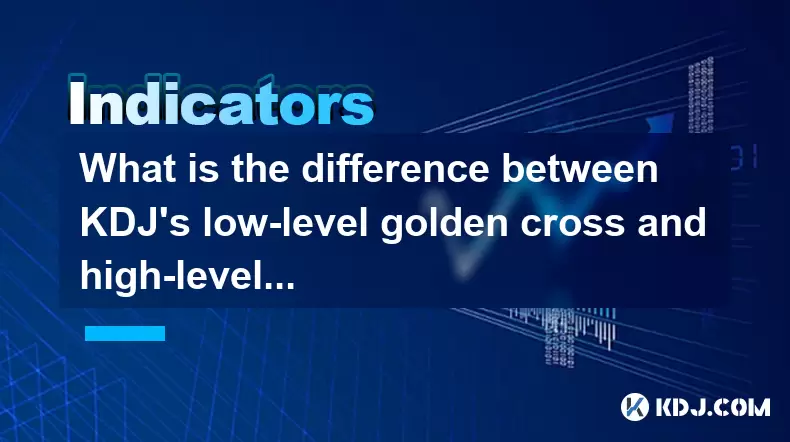
The KDJ indicator is a popular technical analysis tool used in the cryptocurrency trading community to identify potential buy and sell signals. It consists of three lines: the K line, D line, and J line, which are calculated based on the highest high, lowest low, and closing price of a given period. Traders often look for specific patterns within the KDJ indicator, such as the golden cross, to make trading decisions. In this article, we will explore the difference between the low-level golden cross and high-level golden cross in the KDJ indicator and discuss which one is considered more reliable.
Understanding the KDJ Indicator
Before diving into the specifics of golden crosses, it's essential to understand how the KDJ indicator works. The KDJ indicator is derived from the stochastic oscillator, which measures the momentum of price movements. The K line represents the current market momentum, the D line is a moving average of the K line, and the J line is an extension of the D line. When the K line crosses the D line, it generates a signal that traders can use to enter or exit positions.
What is a Golden Cross in KDJ?
A golden cross in the KDJ indicator occurs when the K line crosses above the D line, indicating a potential bullish signal. This event suggests that the momentum is shifting from bearish to bullish, and traders often interpret it as a buying opportunity. However, the reliability of the golden cross can vary depending on where it occurs within the KDJ indicator's range.
Low-Level Golden Cross
A low-level golden cross occurs when the K line crosses above the D line while both lines are in the lower part of the KDJ indicator's range, typically below 20. This type of golden cross is considered a strong bullish signal because it suggests that the cryptocurrency's price has reached an oversold condition and is likely to rebound.
When traders spot a low-level golden cross, they often look for additional confirmation from other indicators or chart patterns before entering a long position. The rationale is that the cryptocurrency's price may have been oversold, and a reversal is imminent. However, it's crucial to consider the overall market trend and other technical factors before making a trading decision based solely on a low-level golden cross.
High-Level Golden Cross
In contrast, a high-level golden cross occurs when the K line crosses above the D line while both lines are in the upper part of the KDJ indicator's range, typically above 80. This type of golden cross is considered a weaker bullish signal because it suggests that the cryptocurrency's price has already experienced significant upward momentum and may be overbought.
Traders who encounter a high-level golden cross often approach it with caution, as it may indicate that the cryptocurrency's price is due for a correction or consolidation. While it can still be a valid bullish signal, it is generally less reliable than a low-level golden cross. Traders may use additional technical analysis tools, such as trend lines or support and resistance levels, to confirm the strength of the signal before entering a trade.
Comparing the Reliability of Low-Level and High-Level Golden Crosses
When comparing the reliability of low-level and high-level golden crosses, most traders in the cryptocurrency community consider the low-level golden cross to be more reliable. This is because a low-level golden cross occurs when the cryptocurrency's price is in an oversold condition, suggesting a higher probability of a price reversal. On the other hand, a high-level golden cross occurs when the cryptocurrency's price is already in an overbought condition, which may indicate that the upward momentum is nearing its end.
To illustrate the difference, let's consider a hypothetical scenario where a trader is analyzing the KDJ indicator for Bitcoin (BTC). If the KDJ indicator shows a low-level golden cross with the K line crossing above the D line below the 20 level, the trader may interpret this as a strong buying opportunity, especially if other technical indicators confirm the signal. Conversely, if the KDJ indicator shows a high-level golden cross with the K line crossing above the D line above the 80 level, the trader may approach it with more caution and seek additional confirmation before entering a trade.
Using KDJ Golden Crosses in Cryptocurrency Trading
While understanding the difference between low-level and high-level golden crosses is essential, it's equally important to use them effectively in cryptocurrency trading. Here are some practical tips for incorporating KDJ golden crosses into your trading strategy:
Combine with Other Indicators: Always use the KDJ indicator in conjunction with other technical analysis tools, such as moving averages, RSI, or MACD, to confirm the strength of the signal. This multi-indicator approach can help reduce false signals and increase the probability of successful trades.
Consider the Overall Market Trend: Pay attention to the broader market trend before acting on a KDJ golden cross. If the market is in a strong uptrend, a low-level golden cross may be more reliable, while a high-level golden cross may be less significant. Conversely, in a downtrend, both types of golden crosses may be less reliable.
Use Proper Risk Management: Always implement proper risk management techniques when trading based on KDJ golden crosses. Set stop-loss orders to limit potential losses and adjust your position size according to your risk tolerance and account balance.
Backtest and Analyze: Before using KDJ golden crosses in live trading, backtest your strategy on historical data to assess its performance. Analyze the results to identify any patterns or weaknesses and refine your approach accordingly.
Frequently Asked Questions
Q1: Can I use KDJ golden crosses as the sole basis for my trading decisions?
A1: While KDJ golden crosses can be a valuable part of a trading strategy, it's generally not recommended to rely solely on them for trading decisions. Combining KDJ signals with other technical indicators and considering the overall market context can provide a more comprehensive view and increase the probability of successful trades.
Q2: How often do low-level and high-level golden crosses occur in the cryptocurrency market?
A2: The frequency of low-level and high-level golden crosses can vary depending on the cryptocurrency and the timeframe being analyzed. In general, low-level golden crosses may occur less frequently than high-level golden crosses, as they require the cryptocurrency's price to reach an oversold condition. However, the exact frequency will depend on market volatility and the specific settings used for the KDJ indicator.
Q3: Are there any specific cryptocurrencies where KDJ golden crosses are more effective?
A3: KDJ golden crosses can be applied to any cryptocurrency, but their effectiveness may vary depending on the asset's volatility and liquidity. Highly volatile cryptocurrencies, such as altcoins with lower market capitalizations, may generate more frequent KDJ golden crosses, but these signals may also be more prone to false positives. In contrast, more stable cryptocurrencies like Bitcoin and Ethereum may produce fewer but potentially more reliable KDJ golden crosses.
Q4: Can I use KDJ golden crosses for short-term or long-term trading?
A4: KDJ golden crosses can be used for both short-term and long-term trading, but the timeframe will influence the settings and interpretation of the indicator. For short-term trading, traders may use shorter periods for the KDJ calculation and focus on more frequent signals. In contrast, long-term traders may use longer periods and look for more significant trends and reversals indicated by KDJ golden crosses.
Disclaimer:info@kdj.com
The information provided is not trading advice. kdj.com does not assume any responsibility for any investments made based on the information provided in this article. Cryptocurrencies are highly volatile and it is highly recommended that you invest with caution after thorough research!
If you believe that the content used on this website infringes your copyright, please contact us immediately (info@kdj.com) and we will delete it promptly.
- Little Pepe: The Next Ethereum 9000% Token Pump?
- 2025-06-24 18:45:12
- Bitcoin Holdings Strategy: Riding the $BTC Wave Like a Wall Street Pro
- 2025-06-24 18:25:12
- Mastercard, Fiserv, and Stablecoin Adoption: A New Era for Payments?
- 2025-06-24 19:05:12
- Mastercard, USDG Stablecoin, and Fiserv: Revolutionizing Payments or Just Another Fad?
- 2025-06-24 18:45:12
- XRP Price Surges Amid Market Tensions: A Token Rally to Watch
- 2025-06-24 19:26:05
- Middle East, Financial Safety, and International Crisis: Navigating the Volatility
- 2025-06-24 19:10:12
Related knowledge
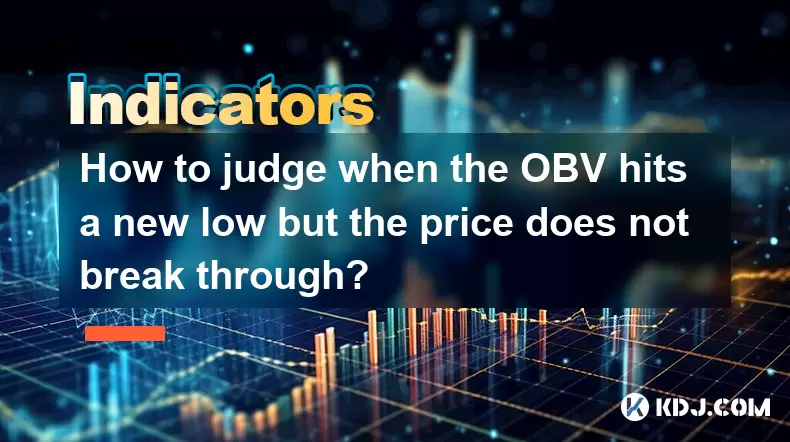
How to judge when the OBV hits a new low but the price does not break through?
Jun 24,2025 at 07:56pm
Understanding the Basics of OBV and Price ActionOn-Balance Volume (OBV) is a momentum indicator that uses volume flow to predict changes in stock or cryptocurrency prices. The core principle behind OBV is that volume often precedes price movement. When OBV hits a new low, but the price does not break through its previous support level, this can indicate...
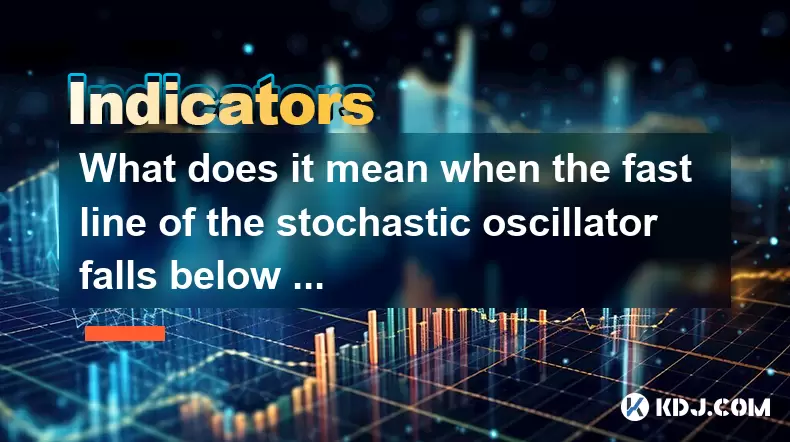
What does it mean when the fast line of the stochastic oscillator falls below the slow line?
Jun 24,2025 at 07:07pm
Understanding the Stochastic OscillatorThe stochastic oscillator is a momentum indicator used in technical analysis to assess overbought or oversold conditions in financial markets, including cryptocurrencies. It consists of two lines: the fast line (typically %K) and the slow line (typically %D). The fast line represents the current closing price relat...
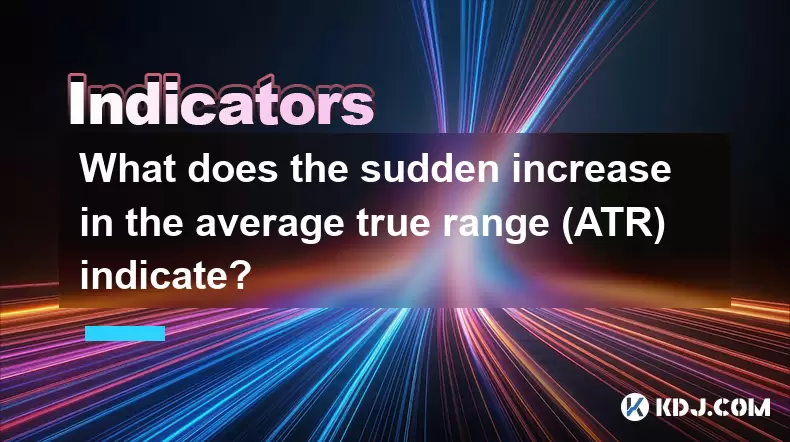
What does the sudden increase in the average true range (ATR) indicate?
Jun 24,2025 at 06:42pm
Understanding the Average True Range (ATR) in Cryptocurrency TradingThe Average True Range (ATR) is a technical indicator used by traders to measure market volatility. In the context of cryptocurrency, where prices can swing dramatically within short periods, ATR becomes an essential tool for assessing potential price movements. The ATR does not indicat...
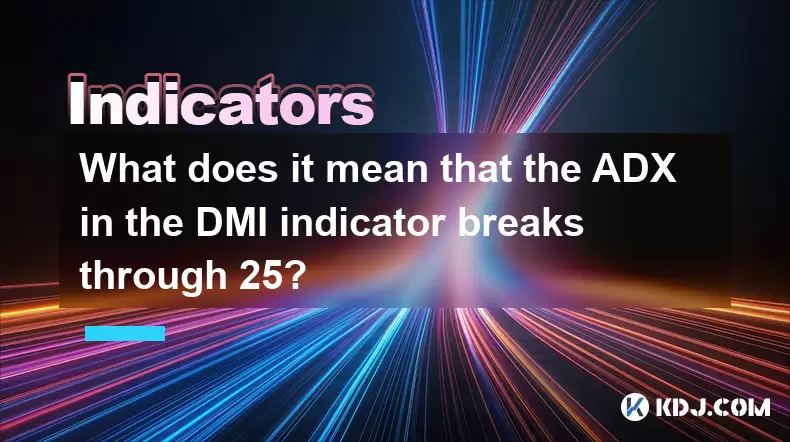
What does it mean that the ADX in the DMI indicator breaks through 25?
Jun 24,2025 at 06:21pm
Understanding the DMI Indicator and Its ComponentsThe Directional Movement Index (DMI) is a technical analysis tool used to identify the strength and direction of a trend in cryptocurrency markets. The indicator consists of two primary lines: the Positive Directional Indicator (+DI) and the Negative Directional Indicator (-DI). These lines help traders ...
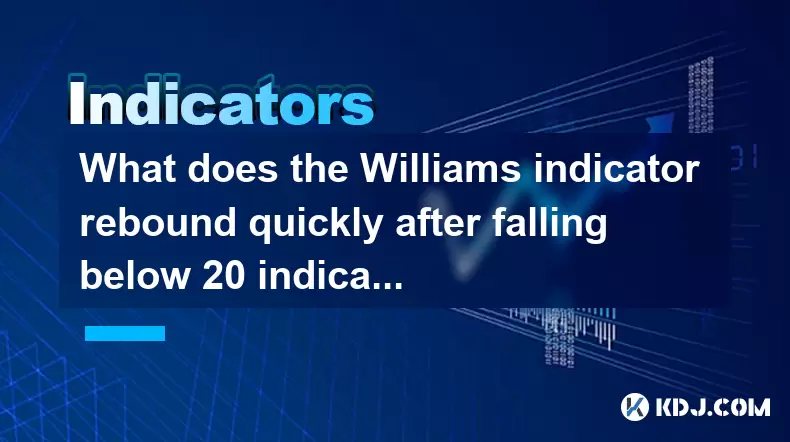
What does the Williams indicator rebound quickly after falling below 20 indicate?
Jun 24,2025 at 04:49pm
Understanding the Williams %R IndicatorThe Williams %R indicator, also known as Williams Percent Range, is a momentum oscillator used in technical analysis to identify overbought and oversold conditions in financial markets, including cryptocurrencies. It was developed by Larry Williams and typically operates on a scale from 0 to -100. In the context of...
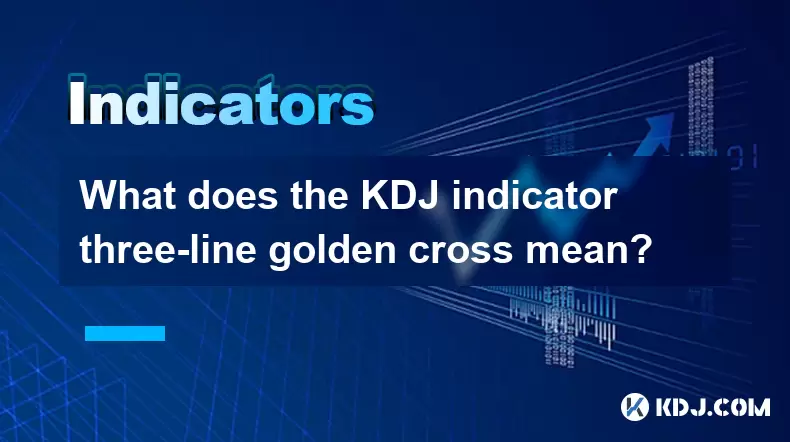
What does the KDJ indicator three-line golden cross mean?
Jun 24,2025 at 05:28pm
Understanding the KDJ Indicator in Cryptocurrency TradingThe KDJ indicator is a technical analysis tool widely used in cryptocurrency trading to identify potential buy and sell signals. It combines elements of two other indicators: the Stochastic Oscillator and the J line, which acts as a signal line. The KDJ consists of three lines — K, D, and J — each...

How to judge when the OBV hits a new low but the price does not break through?
Jun 24,2025 at 07:56pm
Understanding the Basics of OBV and Price ActionOn-Balance Volume (OBV) is a momentum indicator that uses volume flow to predict changes in stock or cryptocurrency prices. The core principle behind OBV is that volume often precedes price movement. When OBV hits a new low, but the price does not break through its previous support level, this can indicate...

What does it mean when the fast line of the stochastic oscillator falls below the slow line?
Jun 24,2025 at 07:07pm
Understanding the Stochastic OscillatorThe stochastic oscillator is a momentum indicator used in technical analysis to assess overbought or oversold conditions in financial markets, including cryptocurrencies. It consists of two lines: the fast line (typically %K) and the slow line (typically %D). The fast line represents the current closing price relat...

What does the sudden increase in the average true range (ATR) indicate?
Jun 24,2025 at 06:42pm
Understanding the Average True Range (ATR) in Cryptocurrency TradingThe Average True Range (ATR) is a technical indicator used by traders to measure market volatility. In the context of cryptocurrency, where prices can swing dramatically within short periods, ATR becomes an essential tool for assessing potential price movements. The ATR does not indicat...

What does it mean that the ADX in the DMI indicator breaks through 25?
Jun 24,2025 at 06:21pm
Understanding the DMI Indicator and Its ComponentsThe Directional Movement Index (DMI) is a technical analysis tool used to identify the strength and direction of a trend in cryptocurrency markets. The indicator consists of two primary lines: the Positive Directional Indicator (+DI) and the Negative Directional Indicator (-DI). These lines help traders ...

What does the Williams indicator rebound quickly after falling below 20 indicate?
Jun 24,2025 at 04:49pm
Understanding the Williams %R IndicatorThe Williams %R indicator, also known as Williams Percent Range, is a momentum oscillator used in technical analysis to identify overbought and oversold conditions in financial markets, including cryptocurrencies. It was developed by Larry Williams and typically operates on a scale from 0 to -100. In the context of...

What does the KDJ indicator three-line golden cross mean?
Jun 24,2025 at 05:28pm
Understanding the KDJ Indicator in Cryptocurrency TradingThe KDJ indicator is a technical analysis tool widely used in cryptocurrency trading to identify potential buy and sell signals. It combines elements of two other indicators: the Stochastic Oscillator and the J line, which acts as a signal line. The KDJ consists of three lines — K, D, and J — each...
See all articles
























































































